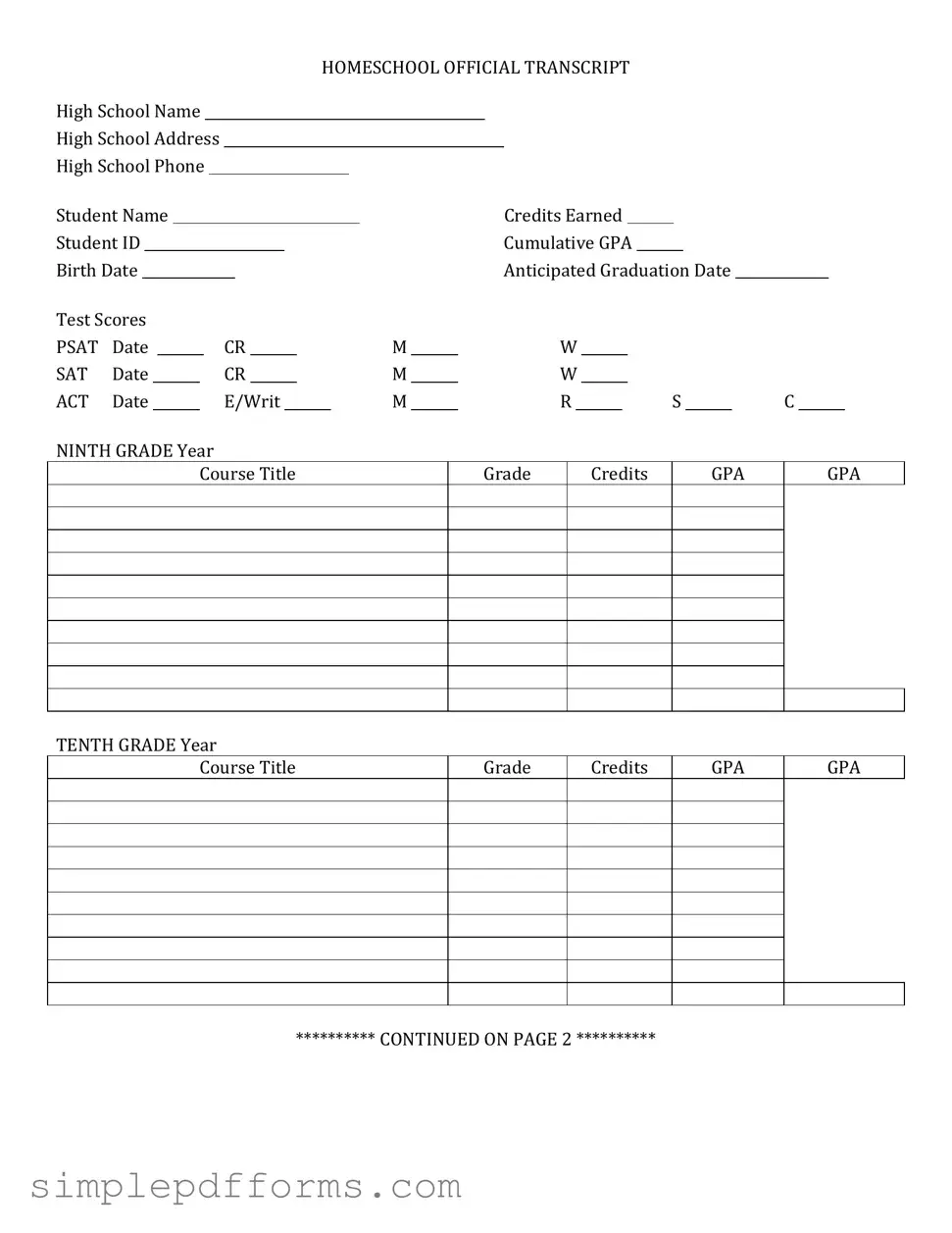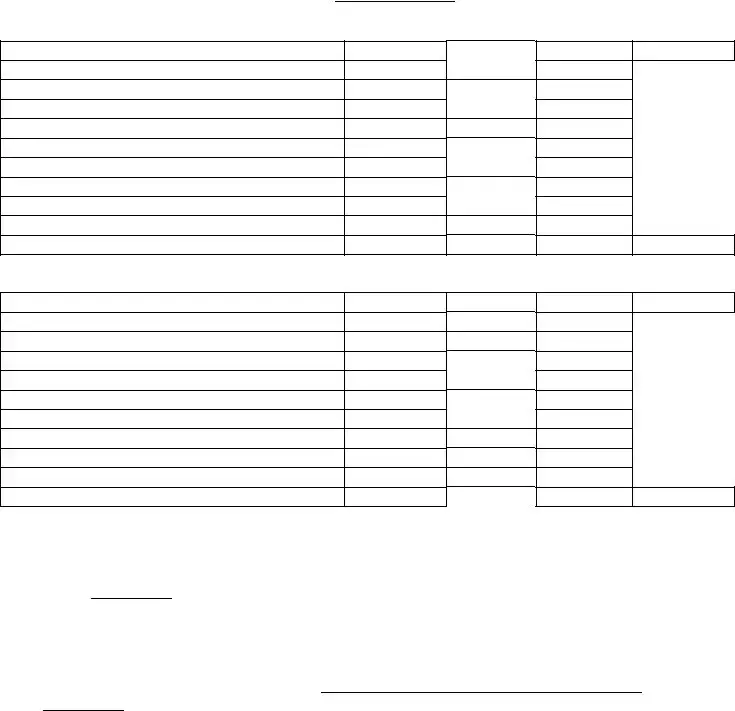Completing a High School Transcript form can be a straightforward task, but many individuals make common mistakes that can lead to delays or complications. One frequent error is failing to provide accurate personal information. It’s essential to double-check your name, date of birth, and contact information. A simple typo can cause significant issues down the line.
Another mistake is neglecting to include all relevant coursework. Students often forget to list advanced placement (AP) or honors courses. This omission can affect how colleges perceive academic rigor. Be thorough and ensure that every class taken is accurately represented.
Some individuals overlook the importance of including grades for each course. It’s not enough to simply list the classes; the corresponding grades must be provided. Missing grades can lead to confusion and may delay the processing of the transcript.
In addition, many fail to keep track of the required signatures. Most transcript requests require a parent or guardian’s signature, especially for students under 18. Missing a signature can result in rejection of the request.
Another common error is not adhering to the submission guidelines. Each school or institution may have specific requirements regarding how the transcript should be submitted. Whether it’s an electronic submission or a physical copy, following these instructions is crucial.
People often forget to request transcripts in advance. Colleges have deadlines, and waiting until the last minute can lead to missed opportunities. Planning ahead ensures that transcripts arrive on time.
Some applicants also neglect to check for consistency across documents. If the transcript information does not match what is on college applications, it can raise red flags. Consistency is key to maintaining credibility.
Another mistake involves not reviewing the final transcript before submission. Errors can sometimes go unnoticed, and submitting an incorrect transcript can have serious implications. Always take a moment to review everything carefully.
Additionally, some individuals fail to include any honors or awards received. This information can provide context to academic performance and showcase achievements. Don’t miss the opportunity to highlight your accomplishments.
Lastly, many forget to follow up on the status of their transcript request. After submission, it’s wise to confirm that the transcript has been received by the intended institution. A proactive approach can help avoid any last-minute issues.


